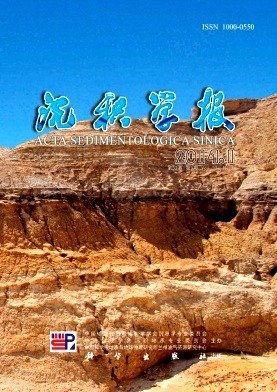Paleosalinity of Chang 9 Reservoir in Longdong Area, Ordos Basin and Its Geological Significance
- Publish Date: 2014-02-10
-
Key words:
- Longdong area /
- Chang 9 reservoir /
- paleosalinity /
- chlorite ring edge cement /
- laumontite
Abstract: On the basis of clay mineral X-ray diffraction analysis and trace element analysis, the lake basin paleosalinity of the deposition of Chang 9 reservoir in Longdong area, Ordos Basin has been recovered according to Couch formula and Adams formula. We discover that they are affected by diagenesis, the value of the paleosalinity which calculate by the Couch formula is lower than the actual value, and Adams formula calculation results reflect the nature of the ancient body of water salinity is more reliable. Studies have shown that, the lake water of Ordos Basin is brackish during the Chang 9 deposition period. Paleosalinity was gradually increased from northeast, northwest and southwest to the central lake basin. The salinity of the late Chang 9 deposition period is lower than the early that reflect the transgressive lake level rise. The salinity high value area was relatively isolated bays or lake centers which belongs half deep lake. The paleosalinity gradually decrease from the lake center to the river estuary direction. The variation of paleosalinity provides a foundation for restoring the ancient geography. The reservoir is closely to lake water salinity, and high salinity water is conducive to the formation of early diagenetic stage chlorite ring edge cement and laumontite. The chlorite ring edge cement formatted in early diagenetic stage is favourable for intergranular porosity preservation. The laumontite is more likely to be dissolved and formed abundant secondary dissolved pores.
| Citation: | Paleosalinity of Chang 9 Reservoir in Longdong Area, Ordos Basin and Its Geological Significance[J]. Acta Sedimentologica Sinica, 2014, 32(1): 159-165. |






 DownLoad:
DownLoad: